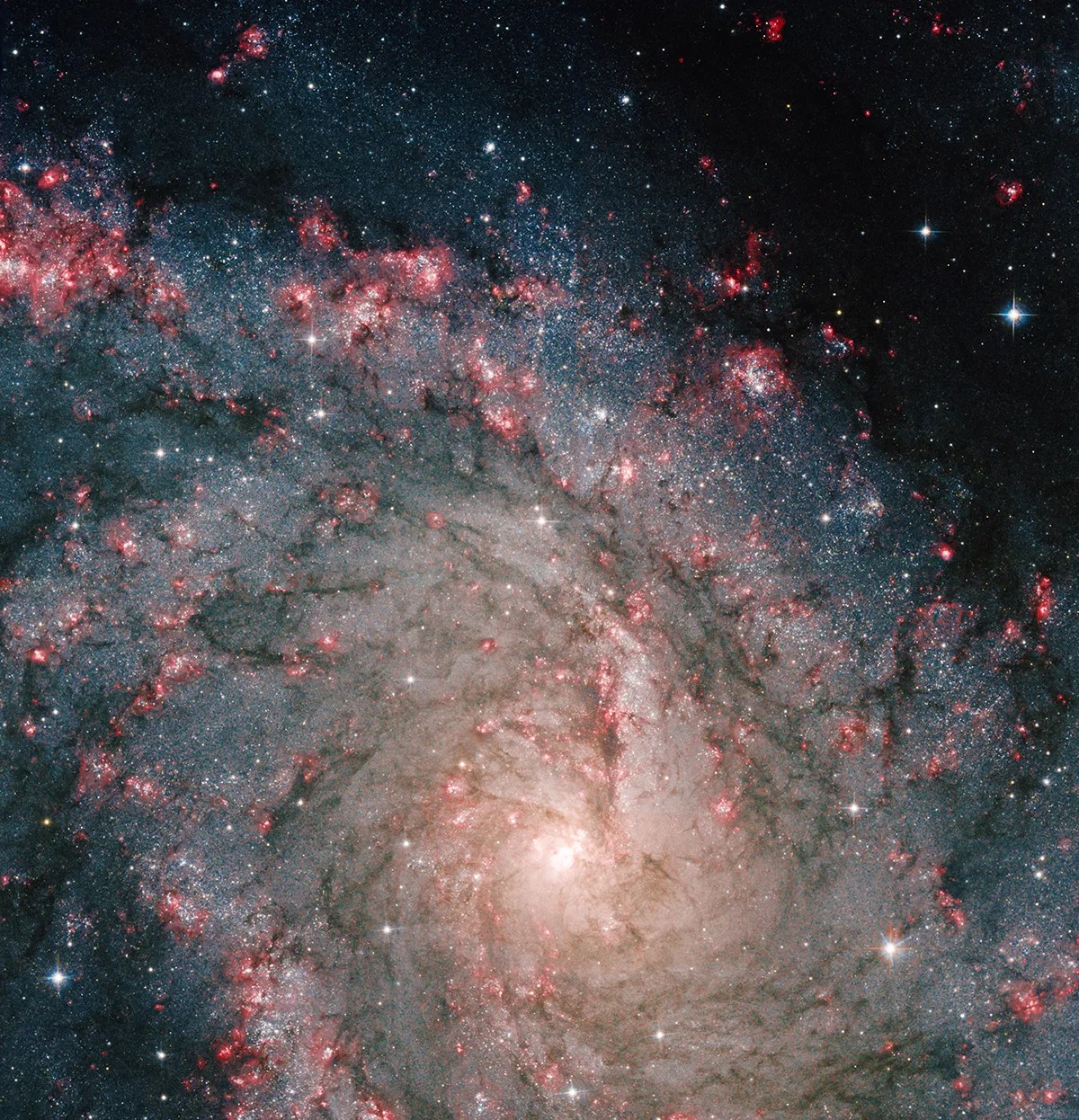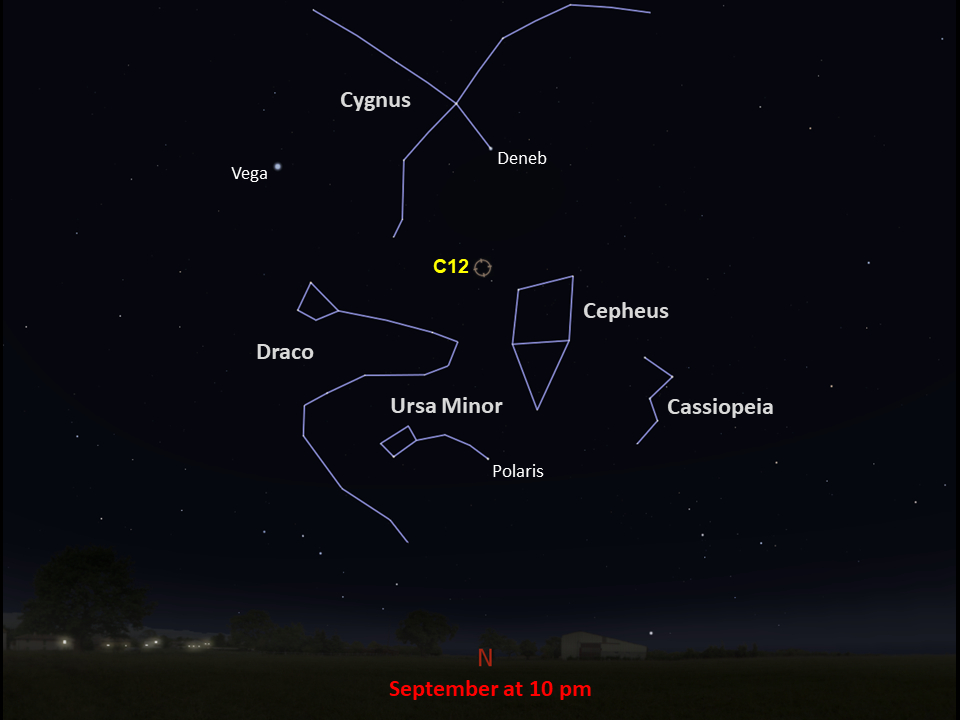Caldwell 12
This majestic spiral has had ten observed supernovae in its spiral arms since 1917.
Distance
15 million light-years
Apparent Magnitude
9.7
constellation
Cepheus and Cygnus
object type
Spiral Galaxy
A spectacular spiral: octopus-like arms of stellar icy blue whipping around a glowing marmalade nucleus like water rushing toward a drain. This is Caldwell 12, a mid-sized spiral galaxy that resides on the border of the constellations Cepheus and Cygnus in our night sky. Caldwell 12’s beauty isn’t its only claim to fame. An unprecedented ten supernovae have been observed in the galaxy’s spiral arms since 1917, making it a popular object for both scientists and amateur astronomers alike. Unfortunately, its location (obscured behind lots of Milky Way dust) as well as its somewhat small size (about 50,000 light-years across) don’t do much to help its apparent luminosity (at magnitude 9.7). This means it can be particularly difficult to spot in the night sky, and when found, can often appear hazy rather than with stark, well-defined spiral arms.
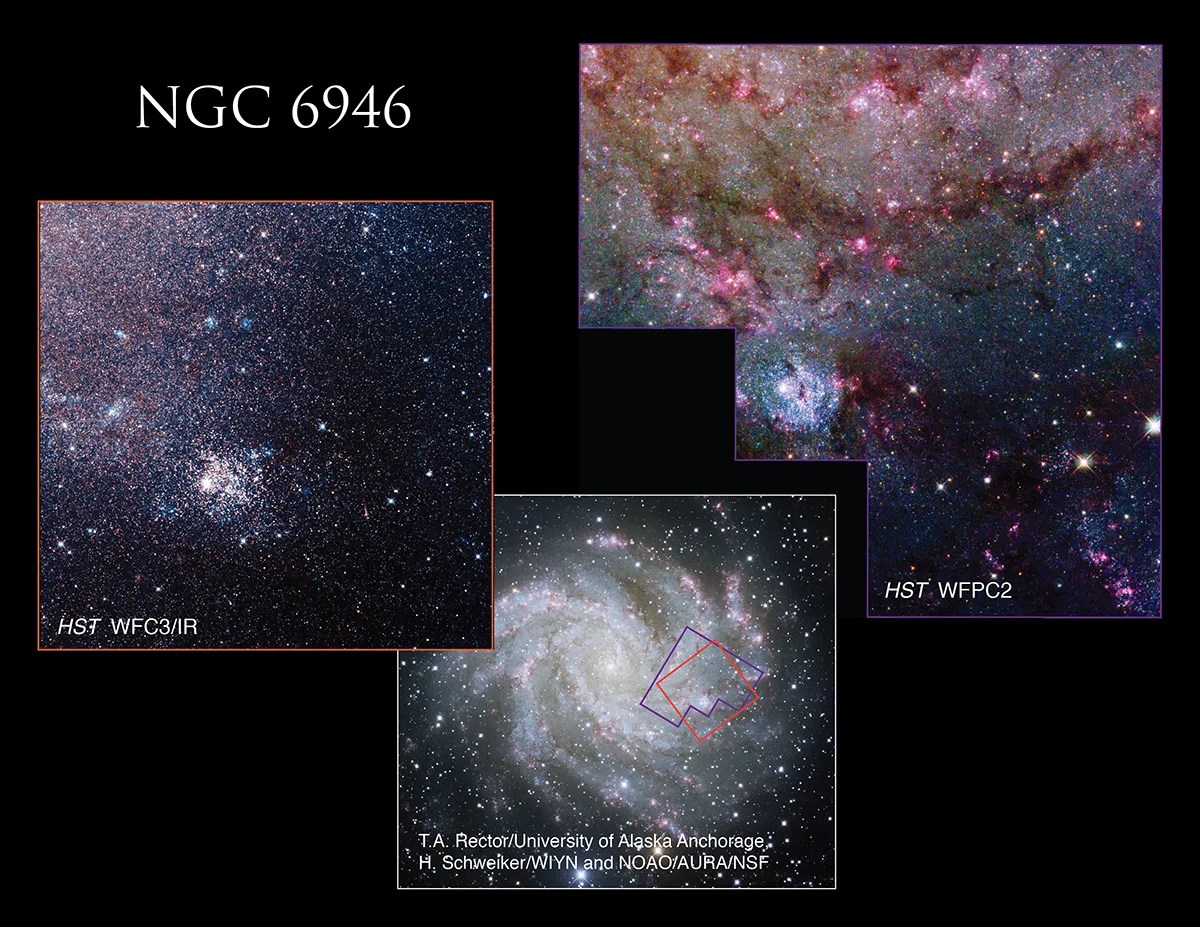
Caldwell 12’s high propensity to produce supernovae has helped earn it the nickname of the Fireworks galaxy. Around the nucleus of Caldwell 12 is a tight, glowing ring, which scientists believe has been manufacturing stars for nearly 20 million years, acting as a stellar factory to fuel the galaxy. Astronomers can learn more about star birth, death, how galaxies formed and came to be with the help of galaxies like Caldwell 12.
Also known as NGC 6946, Caldwell 12 was discovered by astronomer William Herschel in September of 1798. At 15 million light-years away, the Fireworks galaxy is one of the closest known galaxies to the Milky Way outside of the Local Group (a collection of gravitationally bound galaxies that includes our own).
The Fireworks galaxy is best viewed in the late summer in the Northern Hemisphere. In the Southern Hemisphere it’s a late-winter object, but only those close to the equator will have a good view of it. Through a telescope in clear, dark skies, the galaxy appears as a bright nucleus with a soft halo.
This mosaic image, showing a little more than half of Caldwell 12, was made mostly from exposures taken with Hubble’s Advanced Camera for Surveys (ACS) and supplemented with observations from the Wide Field and Planetary Camera 2 (WFPC2). The ACS observations were taken as part of a study of the centers of nearby spiral galaxies and star formation within them. The WFPC2 observations helped identify sources for some of the supernovae observed in the Fireworks galaxy.
For more information about Hubble’s observations of Caldwell 12, see:
Hubble’s Infrared Galaxy Gallery
Glossary
Magnitude - The brightness of an astronomical object, represented by a number; bright objects have low numbers on the magnitude scale, while dim objects have high numbers.
Spiral Galaxy - A galaxy characterized by its spiral structure, with star-filled arms that extend out from the center of the galaxy and host regions of star formation.
Supernova - The explosion of a massive star at the end its life, which ejects material into space and causes the star to temporarily brighten in our sky.
Explore Hubble's Caldwell Catalog
The following pages contain some of Hubble’s best images of Caldwell objects.
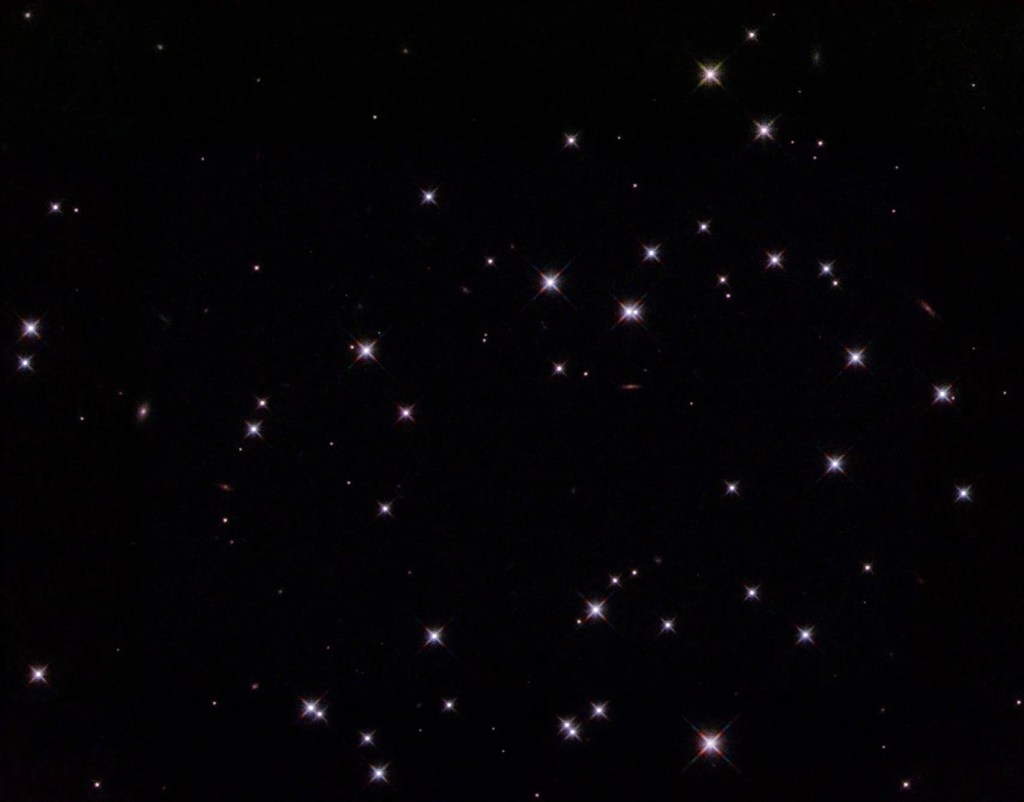
Also known as NGC 188, this group of stars formed from a large cloud of gas making the stars roughly…
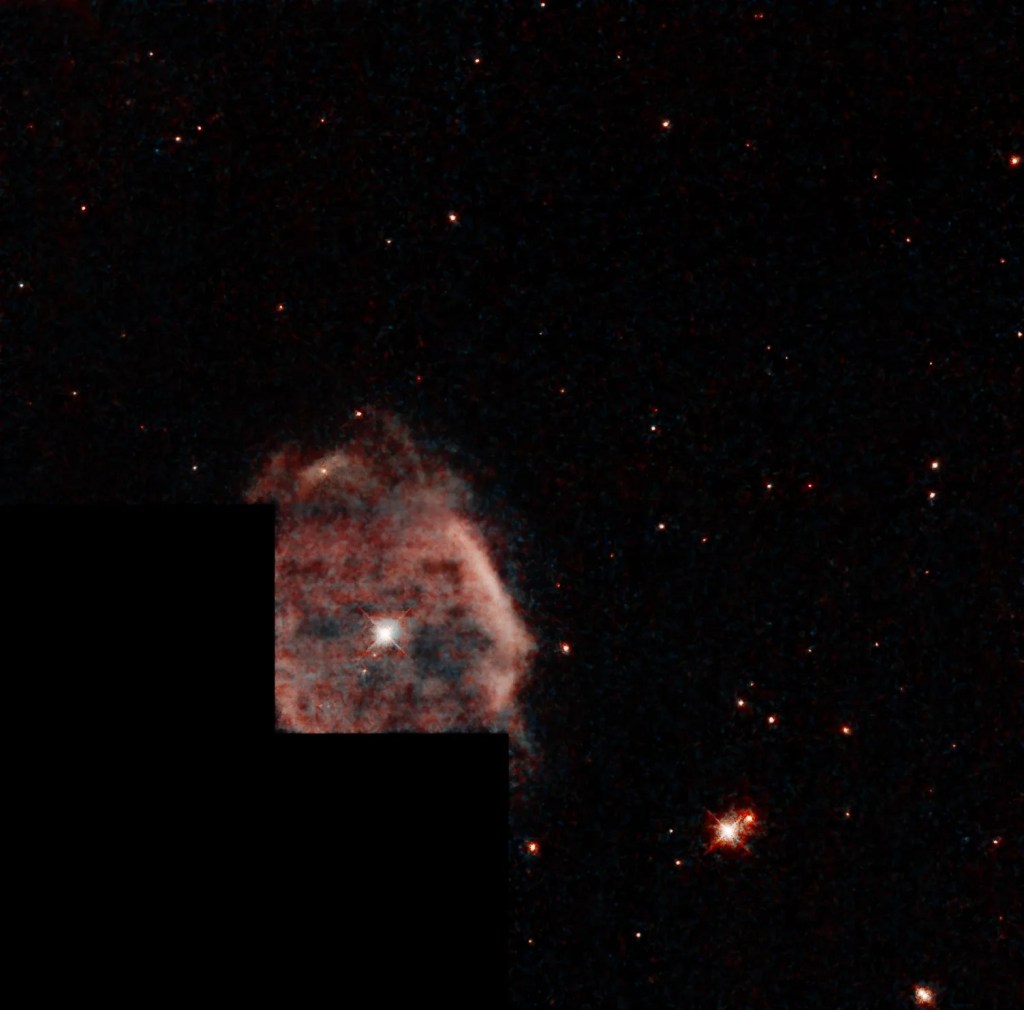
This shell of gas is expanding outward, away from the dying star within.
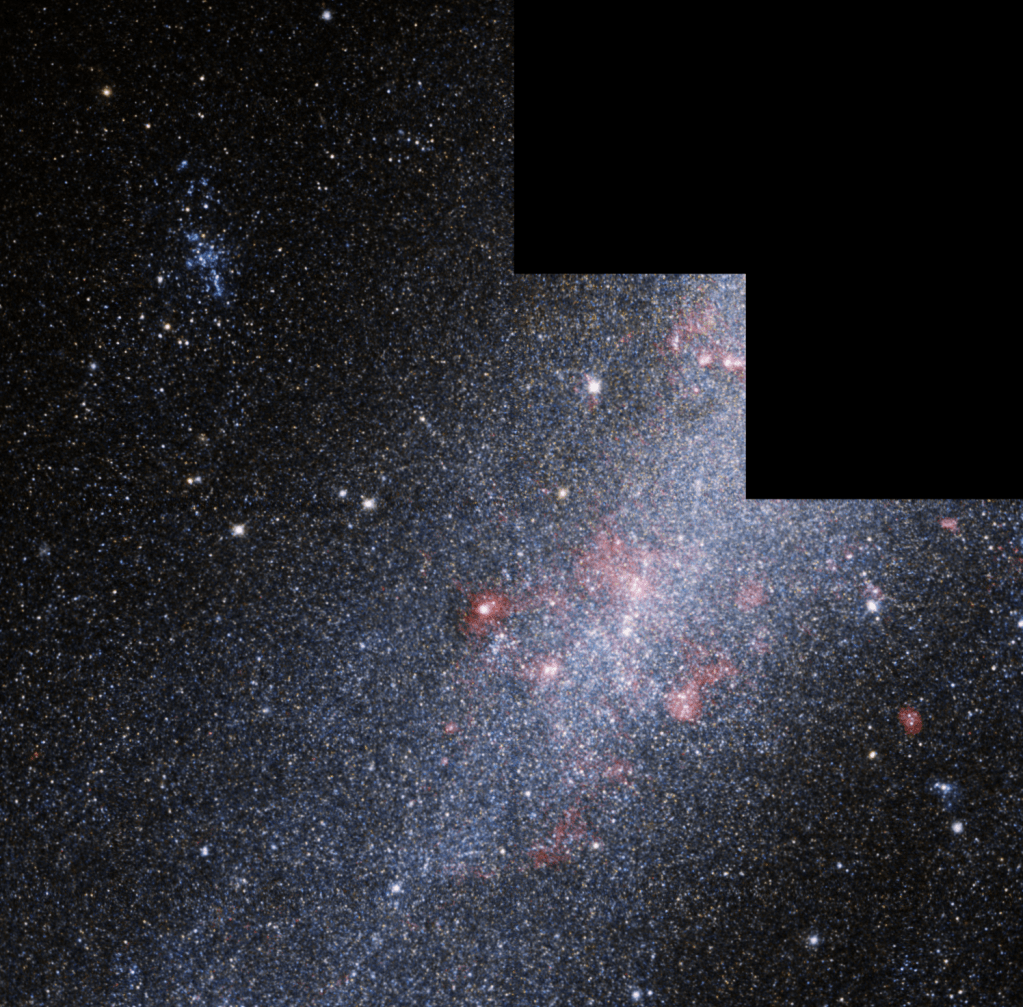
This barred spiral galaxy was first spotted by British astronomer William Herschel in April 1793 in the constellation Draco.





























